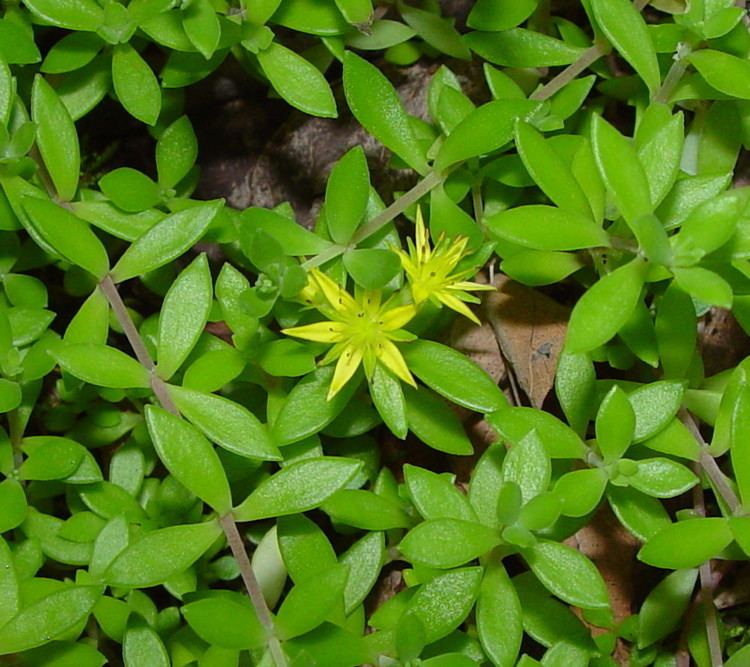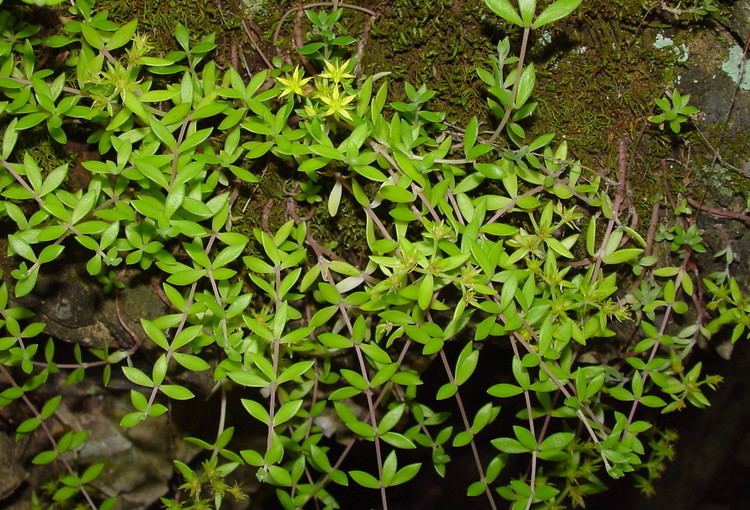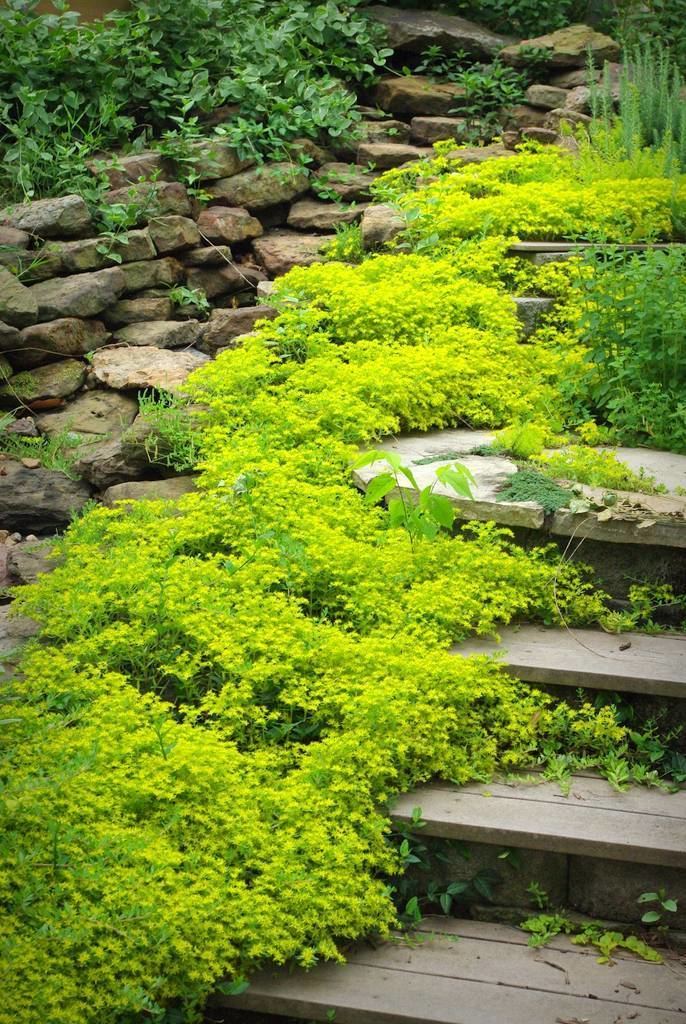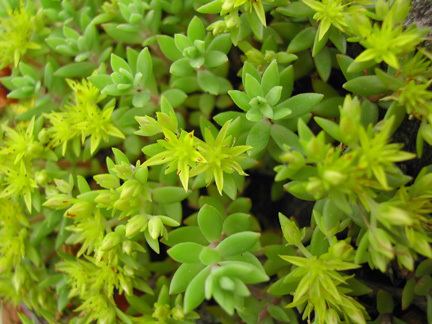Genus Sedum Rank Species | ||
Similar Sedum lineare, Orange stonecrop, Crassulaceae, Stonecrop, Allium monanthum | ||
Sedum sarmentosum is a perennial flowering plant in the family Crassulaceae, native to East Asia(China, Korea) and Southeast Asia(Thailand). Its common names include stringy stonecrop, gold moss stonecrop, and graveyard moss.
Contents

Description

Sedum sarmentosum has succulent, evergreen leaves atop arching, low-lying stems. Yellow flowers consisting of 5 petals arise on an inflorescence during summer. The plant is native to China.
Cultivation

Sedum sarmentosum is cultivated as a perennial groundcover in temperate climates. Like most succulents, it is tolerant of drought and full sun conditions. It was commonly planted at graves where it may persist for decades.
Korea

In Korea, the plant is called dolnamul(돌나물) and eaten fresh as a namul vegetable. The sweet and sour gochujang sauce served with dolnamul can be made by mixing gochujang(chilli paste), vinegar (or lemon juice), sugar (or maesilcheong), minced garlic, sesame oil, and toasted sesame seeds.

It is also a common ingredient in bibimbap, as well as Korean-style western food such as dolnamul and roasted fruit salad with yuja dressing.

